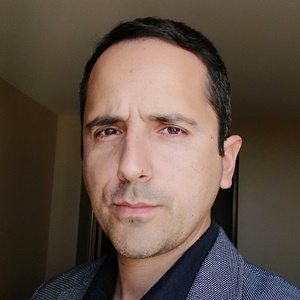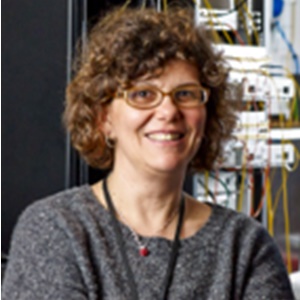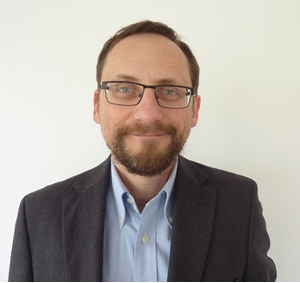KEYNOTES

The Path to Multi-Band Networks: Will the Economics Work?
João Pedro, Senior Principal Engineer, Infinera, Portugal
In view of the relentless demand for traffic, optical transport networks, which today exploit C-band transmission only, will face capacity exhaustion. While the past decade has seen remarkable progress in coherent line interfaces, leading to considerable improvements in spectral efficiency, fundamental limits now loom and more spectrum, in one or several flavors, will be needed. However, optical fiber is a valuable and often scarce asset, with many network operators having restricted access to additional fiber resources. These operators would welcome a multi-fold increase of capacity without having to roll out/lease more fibers. Multi-band transmission, which exploits other transmission bands of the spectrum (e.g., L-, S-, E-, U-band), is the only solution complying with this constraint, with multiple research activities currently underway to tap into its potential. This talk will overview the key challenges of multi-band networks, as well as system- and network-level strategies to address them. Qualitative and quantitative comparisons of adopting multi-band transmission to increase capacity against alternative approaches will be presented, aiming to provide insight onto the prospects of multi-band systems as the next milestone for capacity increase in optical networks.
Important Dates
Submission deadline (firm): 20 Dec. 2022; 20 Jan. 2023; 27 January 2023
Acceptance notification: 10 March 2023
Camera-ready submission: 20 March 2023
Conference date: 08-11 May 2023
Latest News
Platinum sponsor
ONDM 2023 was sponsored by Huawei Technologies France SASU
Platinum sponsor
Gold sponsor
Silver sponsor
Organization
Technical co-sponsorship
Supported by
João Pedro holds a M.Sc. and Ph.D. degrees in Electrical and Computer Engineering from Instituto Superior Técnico (IST), University of Lisbon, Portugal. He was a research engineer and a system architect at Nokia Siemens Networks and Coriant and he is currently a senior principal engineer at Infinera, being responsible for the design of capacity planning algorithms for next-generation optical and multi-layer networks and supporting performance and techno-economic investigations of future-looking architectures. He holds 6 patent applications and has co-authored over 250 publications in international conferences and journals. He has also participated in several EU-funded projects and has been a lecturer of courses on network planning and transport networks. His current research interests include high-capacity optical networks, flexible metro-aggregation architectures, routing and spectrum assignment, multilayer optimization and machine learning applications. He is also a permanent staff member of Instituto de Telecomunicações, a senior member of the IEEE and a member of Optica.
6G: Empowering Digital and Social Transformation
Dimitra Simeonidou, Full Professor, University of Bristol, Co-Director of the Bristol Digital Futures Institute, Director of Smart Internet Lab., United Kingdom
5G was primarily developed with a focus on industry, addressing the importance of advanced connectivity, including optical, to drive digital transformation in vertical sectors. 6G needs to take a more holistic approach towards people and economy, focusing on global societal challenges such as climate change, inclusion, poverty, skills, the future of work and civic renewal. This talk will introduce the notion of adopting Cyber-Physical-Social System (CPSS) approaches to the design of the next generation mobile networks. This is an emerging concept addressing the need to understand the impact of Cyber-Physical Systems (CPS) on society and vice versa, and design digital infrastructures accordingly. It reflects on projected trends of 6G, its users and their environment. The talk will further explain the rational for human-centric service models and will justify the need to leverage on human intelligence and co-creational methodologies in the design and delivery of future mobile networks.

Dimitra Simeonidou is a Full Professor at the University of Bristol, the Co-Director of the Bristol Digital Futures Institute and the Director of Smart Internet Lab. Her research is focusing on the fields of high-performance networks, programmable networks, wireless-optical convergence, 5G/6G and smart city infrastructures. She is increasingly working with Social Sciences on topics of digital transformation for society and businesses. Dimitra has been the Technical Architect and the CTO of the smart city project Bristol Is Open. She is currently leading the Bristol City/Region 5G and Open RAN pilots.
She is the author and co-author of over 600 publications, numerous patents and several major contributions to standards.
She has been co-founder of two spin-out companies, the latest being the University of Bristol VC funded spin-out Zeetta Networks, http://www.zeetta.com, delivering SDN solutions for enterprise and emergency networks.
Dimitra is a Fellow of the Royal Academy of Engineering (FREng), a Fellow of the IEEE (FIEEE), Fellow of WWRF and a Royal Society Wolfson Scholar.

Quantum Key Distribution over fiber-based transport networks: a good match?
Helmut Griesser, Director of Advanced Technology, ADVA Network Security, Germany
The introduction of large-scale quantum computers will make almost all key-exchange protocols in use today vulnerable to quantum attacks. For fiber networks, quantum key distribution (QKD) seems to be the natural answer to this challenge, promising security that does not depend on the progress in mathematics or increase of computing power, be it conventional or quantum. When using QKD for optical transport networks, the advantage is that there is already a fiber network that, at least in principle, can also transport the quantum signal. This can be done either on an extra (dark) fiber (if such a fiber is available) or on a specific wavelength multiplexed with the data traffic. However, the additional fiber just for the quantum signal can be expensive if the carrier is not the owner of the fiber cable. Wavelength multiplexing with data carrying channels leads to linear and nonlinear crosstalk from the data channels onto the weak quantum signal, reducing the secure key rate. In order to limit the crosstalk, the cumulative power of the data channels needs to be kept at a minimum, also limiting the transmission capacity of the fiber. The talk will introduce the challenges of QKD in fiber networks, compare different technologies and discuss QKD network configurations and concepts.
Helmut Griesser received the Dipl.Ing. and Dr.Ing. degrees in electrical engineering from the Ulm University, Ulm, Germany. In 2002, he joined Marconi focusing on high-speed fiber transmission research. From 2007 to 2011, he was with the Optical Product Unit of Ericsson and then joined ADVA Optical Networking as a Principal Research Engineer. Currently he is Director of Advanced Technology of ADVA Network Security in Germany. During his career, Helmut has authored or co-authored more than 100 technical publications and he is currently member of the program committees of OFC and ECOC. His research interests include digital signal processing, coding and security for optical communication systems.





